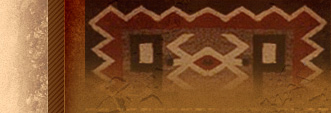 |
 |
| |
Burning Through the Roots, Part 7
|
|
| |
On September 8, 1878 the Cheyenne started walking back north, starved and ragged as they were. Leading them were the chiefs Little Wolf and Dull Knife. Two-thirds of the 300 people were women, children, or the elderly, and many were sick. The people knew what they were risking. Most of them had been in lethal skirmishes with the Army more than once. One of the women, for instance, was the daughter of council chief Little Rock, killed when Custer attacked a sleeping village of Cheyenne along the banks of the Washita River ten years before. A teenaged girl then, Monahsetah had been taken prisoner during the battle and then carried off to Kansas with two other Cheyenne women by the victorious general (Footnote 6). It was well known among the Cheyenne that Yellow Swallow, the frail, light-haired child at her side now, was Custer's son (Footnote 7). Custer was dead, of course, two years since. And the country was grinding its way into a modern age that had no room for the Indian way of life any more, priding itself on the spread of telephone communication, cable cars and gramophone, and the new Brooklyn Bridge growing over the East River. The country these people had to cross to get home wasn't wild any more.
They traveled 1500 miles through the kinds of settlements later described by Willa Cather, with telegraph lines carrying news of their whereabouts and plans for their capture right over their heads. The Army loaded horses and men onto trains and freighted them to ambush sites at each of the three places the Cheyenne had to cross a major east-west rail line. A total of 10,000 soldiers and 3,000 civilians caught up -- 5 separate times! -- with these 300 people, who always made a stand and then fled the moment they could. But the pressure mounted and the autumn weather worsened as they fled ever northward, and in Nebraska the group finally had to split up. The old chief Dull Knife took most of the old people, women, children, and wounded to Red Cloud's agency near Fort Robinson to ask food and shelter from the old Lakota friend of these Cheyenne. A small number of warriors and Dog Soldiers went with them to protect the children. The younger chief Little Wolf led the rest of the people on north, hoping to reach their homeland on the Tongue River before spring.
On October 23 a blinding snowstorm swept across the weary, starving travelers trying to reach Red Cloud and brought them to a halt. Before they could move again troopers from Fort Robinson discovered their camp. The soldiers told them the Red Cloud agency had been shut down, so they would be taken to the fort instead. That night the wary Cheyenne dismantled their five good guns and hid the parts among their garments. When they reached the fort, the 150 people were locked in a log barracks that had been built to house half that many soldiers. They stayed there for over two months, refusing to return to Oklahoma and forbidden to go elsewhere.
On January 3, General Sheridan wired the post commander that "Unless they are sent back to where they came from the whole reservation system will receive a shock which will endanger its stability." The post commander relayed Sheridan's ultimatum but the Cheyenne still refused to go south. The commander gave them five days to change their minds and cut off their food, fuel, and water. On the 9th, three warriors accepted invitations to visit the post commander for talks. They were arrested and manacled, but one escaped to race outside long enough to call a warning to the others. Then the post blacksmith showed up to fasten heavy chains and iron bars over the barracks doors. The people feared they were to be burned to death. That night, they reassembled their five guns and escaped just before 10 pm, under a bright full moon on deep snow in below-zero temperatures. The five Dog Soldiers stood rear guard for the fleeing helpless ones, as has always been and forever remains the Dog Soldiers' charge, until finally the last of them fell dead. Then the soldiers began to catch up with the running knots of black figures racing across the moonlit snow for the bluffs that could protect them.
|
|
|
|
|
|
 |
|
|

